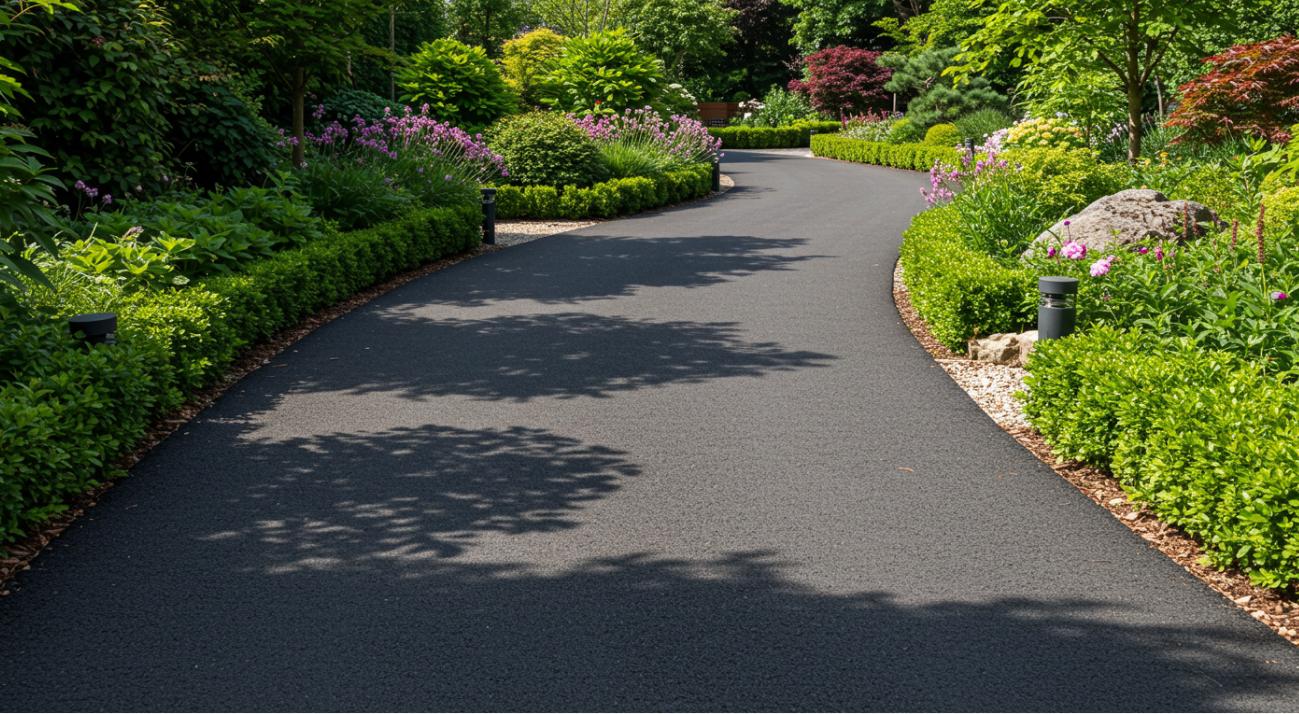
Transforming your outdoor space becomes easier with the right materials, and an asphalt garden path is a fantastic choice for combining durability and aesthetics. This guide covers the key steps for installing an asphalt path, its benefits, and creative design ideas that can elevate your garden landscape.
Why choose an asphalt garden path?
Many homeowners are increasingly opting for asphalt pathways due to their myriad advantages. An asphalt path is not only functional but can also complement the beauty of your garden. Here’s why you should consider this material:
Durability
One of the standout features of asphalt is its durability. It can withstand harsh weather conditions, heavy foot traffic, and the wear and tear of outdoor elements. Unlike some other materials, asphalt is less likely to crack or become uneven over time, making it an excellent long-term solution for your outdoor pathways.
Low maintenance
Maintaining an asphalt path is relatively simple. Unlike concrete, which may require sealing, asphalt generally needs only regular cleaning and occasional resurfacing. Cleaning with soap and water or a gentle power wash keeps it looking fresh, so you spend less time maintaining and more time enjoying your beautiful garden.![]()
Cost-effectiveness
Installing an asphalt garden path can be a more budget-friendly option compared to materials like concrete or natural stone. While initial installation costs can vary based on your location, asphalt typically offers a cost-effective solution that balances quality with affordability.
Design ideas for your asphalt garden path
When it comes to designing your asphalt path, the options are virtually limitless. From simple straight lines to intricate patterns, here are some design ideas to create a stunning outdoor space:
Straight vs. curved paths
A straight path can provide a clean, modern look while guiding visitors directly to focal points in your garden. Conversely, a curved path can offer an inviting, meandering feel that encourages exploration. You can choose based on your garden’s overall design and the experience you want to create.
Incorporating edging materials
Using edging materials can elevate the aesthetic appeal of your asphalt garden path. Think about using asphalt with bricks, stones, or wood for a beautiful border that marks your path and adds different textures. This can also protect the edges of your path from wear and enhance the overall layout.
Including plant
Your asphalt path can easily blend seamlessly with your garden’s flora. Planting flowers, shrubs, or ornamental grasses alongside the path can enhance visual harmony. Choose plants that complement the asphalt color scheme while thriving in your local climate, which can create a lush, vibrant atmosphere.
Fruit or ornamental trees are better for providing shade, visual interest, and potentially edible harvests or beautiful blossoms to enhance your garden path.
How to install an asphalt pathway?
Building an asphalt path can be done by professionals or as a DIY project with the right preparation. Here’s a simple step-by-step guide to get started:

Gather your materials
You will need asphalt mix, compacted gravel for the base, edging materials, a shovel, a tamper, and possibly a roller for a smooth finish. Ensure you have all necessary tools and materials at hand before starting.
Prepare the area
Mark out the area where you plan to install the path. Clear any debris, sod, or existing plants from the area. Dig out the soil to create a stable base, making sure to account for the depth needed for your gravel and asphalt layers.
Install the base and asphalt
First, lay down a layer of compacted gravel, which will provide drainage and support. After leveling this base, you can apply the asphalt mix evenly over the top, using a tamper or roller for a smooth finish. Allow it to cure according to the manufacturer’s instructions before using it.
Maintain asphalt path tips
Once installed, maintaining your asphalt path is key to ensuring longevity. Here are a few tips:
Regular cleaning
Routine cleaning keeps your asphalt path looking its best. Use a broom or a leaf blower to remove debris and leaves that might trap moisture. A power washer can be effective for tougher stains, but always use it at low pressure.
Crack repair
If you notice any small cracks forming, it’s best to address them promptly. Use a cold-patched asphalt crack filler to seal the cracks, preventing water from seeping in and causing more extensive damage.
Resurfacing
Every few years, consider resurfacing your asphalt path. This process involves adding a new layer of asphalt over the existing path to refresh its look and extend its life. Regular resurfacing can keep your path looking new for many years.
Enhancing your outdoor space with an asphalt garden path is a stylish and practical choice that brings together functionality and beauty. Embrace the durability and appeal of asphalt while customizing your design to suit your garden’s charm.
Whether you’re looking for a sleek modern design or a warm rustic feel, asphalt paths can be customized to suit your style while directing the flow of foot traffic through your garden.
Ask for professional help to bring your project to fruition while avoiding unnecessary expense.
https://www.youtube.com/watch?v=wx4UIrXCGTs











